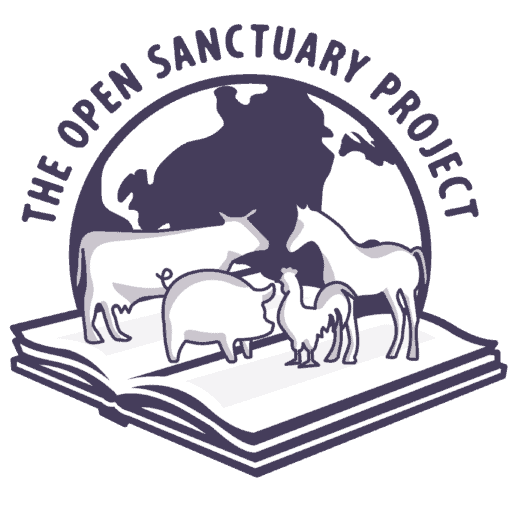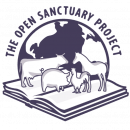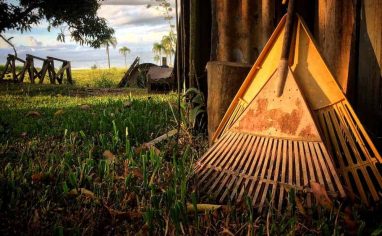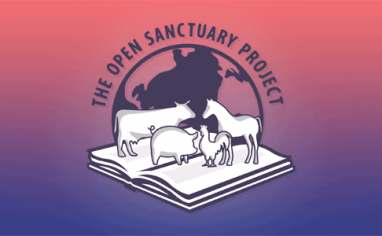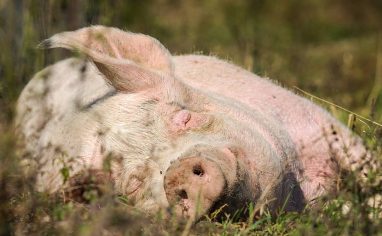
Subscribe To The Open Sanctuary Podcast
If you’d like to get the latest episodes of The Open Sanctuary Podcast, you can subscribe for free on all Podcast platforms, including Apple Podcasts and Spotify!
Episode Notes
In this episode of The Open Sanctuary Podcast, Executive DirectorThe individual formally in charge of final decision making at an organization, who sometimes works closely with the organization’s Board of Directors. Sometimes a Founder is an Executive Director, especially early in a nonprofit’s growth stages. Mckenzee and NonprofitA non-governmental organization whose primary purpose is something other than selling goods or services. Specialist Julia discuss what it means to us when we say that The Open Sanctuary Project is a living library. We talk about how and why we perform regular resource updates to address community feedback, integrate new developments in compassionate care and organizational strategies, and more. We also discuss major updates to our foundational resource on sanctuary capacity metrics. Why did we add governance as a capacity metric? How do participatory boards factor in? We hope this episode gives you greater clarity on our update protocols, as well as some new insights on sustainable governance!
This Episode’s Referenced Open Sanctuary Project Resources:
- Information Sourcing Considerations At The Open Sanctuary Project | The Open Sanctuary Project
- Determining Your Animal Sanctuary’s Capacity For Responsible Care | The Open Sanctuary Project
- Animal Sanctuary Sustainability: Defining and Implementing Plans For Resiliency | The Open Sanctuary Project
- Succession Planning: A Necessary Component Of Responsible Animal Sanctuary Management | The Open Sanctuary Project
- Creating An Effective Set Of Contingency Plans For Your Animal Sanctuary | The Open Sanctuary Project
- The Open Sanctuary Project’s Contingency Planning Workbook | The Open Sanctuary Project
- Nonprofit Board Basics For Animal Sanctuaries | The Open Sanctuary Project
Episode Transcript (Auto-Generated)
Julia Magnus: Welcome to another episode of the Open Sanctuary Podcast. I’m Julia, the nonprofit, and I’m chatting with my friend and executive director Mckenzee Griffler. Today we want to discuss updates, both generally and specifically, regarding one set of updates that we made to our capacity resources as we developed our new framework for understanding sanctuary sustainability. You can hear all about that in the last episode of our podcast. If you listen to our podcast regularly, you’ll know that we’ve honed in hard on the questions of capacity, success, planning, contingency planning, and most recently, sustainability, as I mentioned, which is kind of a burrito wrap of all those good things combined. So, this week we’ll revisit that. But let’s start with how we at OSP look at updates. Generally, we often talk about the Open Sanctuary Project as a living resource, and I really want to unpack what that means today, especially considering the continuous updates that we’re always doing, like the most recent one to our capacity resource on July 10th. So, Mckenzee, what does OSP being a living resource truly signify for us?
Mckenzee Griffler: That’s a great question, Julia, and I’d like to think that when we call the Open Sanctuary Project a living resource, we are underlining, underscoring, emphasizing that we do not make static resources that we do one time and then we call it good. We are endeavoring to create a dynamic, ever-evolving digital guide. Our primary missionThe stated goals and activities of an organization. An animal sanctuary’s mission is commonly focused on objectives such as animal rescue and public advocacy. is to provide freely accessible and continuously growing information necessary to responsibly create and manage an animal sanctuary or to simply provide the best possible care to animals, helping them live long, healthy, and happy lives free of exploitationExploitation is characterized by the abuse of a position of physical, psychological, emotional, social, or economic vulnerability to obtain agreement from someone (e.g., humans and nonhuman animals) or something (e.g, land and water) that is unable to reasonably refuse an offer or demand. It is also characterized by excessive self gain at the expense of something or someone else’s labor, well-being, and/or existence., which I’m sure you’ve heard me say many times. In practice, this means that we’re constantly researching sanctuary models and needs. We’re talking with experts worldwide. We’re developing new resources and we’re soliciting feedback for what we’ve already created. So, this is all an ongoing process because the needs of the sanctuary movement are always adapting, and we want our guidance to remain reliable, actionable, relevant, and effective. So, for instance, a small example is that we are extremely cautious about mentions of specific products and brand references in our resources. Not just because we don’t want to give the sense that we’re endorsing a product, but also because we all know that, for instance, the nutritional makeup of food, for example, can change at any time, as can the ingredient mix. And for this reason, we try really hard to keep these kinds of things in mind, because very quickly things change. And it’s important for us to constantly review everything written, not just evergreen things like looking at nutrient mixes rather than products, and make sure that they are still within the realm of the greater holistic story that we’re trying to suggest to sanctuaries within the guidance that we’re giving to sanctuaries, that it’s all cohesive. It all flows together and it all builds on one another.
Julia Magnus: Yeah. The food example, it’s a small one, but it underscores the need for constant vigilance and updates on our part. That makes a lot of sense. And this also speaks to our philosophy that there’s no one-size-fits-all model for animal sanctuaries. That every sanctuary is unique in its species mix, population size, climate, organizational structure, and philosophy of care. So what works for one might not be appropriate for another. And also circumstances at a single sanctuary can change such that what once worked needs to be changed or adapted. So, how do we ensure and how do our updates ensure that our resources honor this diversity while still providing robust practical and ethical guidance?
Mckenzee Griffler: I would say that is one of the trickier things about the work that we do is trying to encompass all of these different visions of sanctuary and practical realities that are very different all around the world depending on so many of the factors that you’ve just discussed and so many more factors. And I would say that that’s where our commitment to utilizing diverse perspectives and rigorous sourcing comes in. Our resources frequently endeavor to include resources from various organizations, highlighting these practical, ethical, and philosophical considerations involved in any particular course of action and what might lead one organization to make one choice whereas a different organization might make a different choice. In fact, we have a full resource on the sourcing of information on compassionate care that we’ll drop in the show notes that really starts to tackle, even beyond that, how we find the information that we use if it’s not specifically from sanctuaries and how we decide whether it is an acceptable source for us to disseminate. We’re very grateful that we get regular community feedback on our resources, which can help us with updates. And in addition to that, all of our staff has significant experience with caregiving, rescue, and sanctuary work. We also make a point of having regular staff meetings to consider what might need to be reviewed or updated. As you all know, we’re coming up on nine years as an organization, and we really don’t want resources that are back from 2018 to go unread because we want to make sure that everything on our website still meets our very rigorous criteria for existing on our website and that’s always changing.
Julia Magnus: Yeah. In addition, as we make new resources, we often find that we have to go back and look at older resources that link to it, review those for any needed updates. Like as we speak, our friend Tara, who started revising and updating our introduction to sheep care resource, started generating more resources, revisiting even the sheep how we got here resource to make sure that everything is consistent and reflective of our standards because our standards over time as well have changed, evolved, and become more rigorous when it comes to the information that we’ve put out in the past and what we put out now.
Mckenzee Griffler: Yeah. And that happens so frequently in our resources when we kind of start to go a little bit deeper afield on a specific topic. And then we say, “Oh, we are actually way oversimplifying some pretty key things that happened three steps before this.” And now we’ve got a cascade of updates that have to happen across 40 resources on our website because it’s the right thing to do. And it’s just kind of the challenge of creating a living encyclopedia that encompasses so many different species and needs. And there are sometimes even circumstances where we find ourselves having to update almost on a daily basis. The situation with highly pathogenic avian influenza as that was evolving was very much one of those situations that was particularly challenging because we would update and the next day something would have changed. And so these things happen actually probably more frequently than you might realize. So it felt important that before we talk about this very specific resource that we give you insight on how we update resources generally. Folks, you’ve heard of talking a lot lately about sanctuary capacity for responsible care. So yes, this is what we’re talking about. We recently updated our key resource on this subject with a specific emphasis on governance capacity.
Julia Magnus: So Mckenzee, why has governance capacity become another central component of our understanding of capacity and sustainability?
Mckenzee Griffler: So as you all likely know, we celebrated sanctuary summer sustainability week recently. And part of that was creating this new capstone resource on the variables of sanctuary sustainability and what it means for a sanctuary to work towards organizational sustainability. And sustainability, as you likely know if you listen to this podcast, is a major topic that has so many different variables and so many different solutions for them that it can quickly become quite overwhelming. And for that reason, we spent a long time as a staff discussing the concept of sustainability and whether it could be simplified into a model that would be flexible enough to encompass everything that sustainability means for an organization. And we eventually got there as sustainability equals anticipated capacity requirements plus the adaptability to change. And believe you me, it took a long time for us to land on that. And one of the reasons why it was so challenging turned out to be because we were missing a key element of capacity by our own standards. And we first developed our capacity framework in 2018. And we hadn’t really done a lot of review about that subject matter because it felt really well-rounded. It felt like it kind of covered all the bases. But when we considered sustainability, we realized that without updating capacity as a resource, we would be missing a huge part of sustainability or we would start to get into a really complicated equation to try to fit back in that missing piece. And I think at that point, we just said, “Hey, we probably just have to go back to basics with it and update that resource.” And this is all to say that we recognized that governance is a capacity variable. And I think that took a while to wrap our heads around, partially because I think it’s such an obvious part of sanctuary that it almost just disappeared into the background. But we had to name it because once we did name it, we realized how critical it was as a metric for so many different abilities of a sanctuary to have any capacity.
Julia Magnus: I remember these discussions. They weren’t that long ago, and they were also very involved. But let me rewind for a second just to mention again the variables that we were acknowledging in that capacity resource. So obviously most people when they think about capacity they’re often focusing on spatial capacity which is the literal physical space available. So that’s for sure crucial and we discuss it in the capacity resource. It is just one piece of the puzzle. And the other variables that are critical that we’ve highlighted include quarantineThe policy or space in which an individual is separately housed away from others as a preventative measure to protect other residents from potentially contagious health conditions, such as in the case of new residents or residents who may have been exposed to certain diseases. capacity to prevent disease spread, caregiverSomeone who provides daily care, specifically for animal residents at an animal sanctuary, shelter, or rescue. capacity to ensure individualized attention and prevent caregiver burnoutA physical and emotion reaction to prolonged, unmanaged workplace stress., financial capacity to cover lifelong care costs, supporter capacity to maintain fundraising efforts, and emergency response capacity for unforeseen events like natural disasters. So in capacity land now we’ve brought in governance. So why don’t you tell me more about that?
Mckenzee Griffler: I think you and I on this podcast have talked a lot about sanctuary governance. I feel like so often that’s our jam. And when considering governance as a capacity variable, what we’re talking about is the ability for a sanctuary to truly have thoughtful and proactive governance, maintenance, and administration. And what this ends up doing is it allows a sanctuary to remain solvent as an organization and to remain within legal compliance. So to consider governance as a sanctuary variable ensures that the organization has the necessary structural support to make sound decisions, to manage resources, and navigate challenges effectively for the long term. And without strong governance, or with, you know, maybe a rubber stamp board, maybe just a lack of governance or a very reactive governance that isn’t proactive, even a sanctuary that has abundant physical space or a lot of finances or all of the other capacity metrics in a healthy place, they’re still going to be limited in what it is that they can achieve because governance just allows so much more bandwidth for effective planning and to really understand what the trajectory of a sanctuary will become. So let’s dig a little deeper into that. In previous podcasts and particularly in the ones on succession planning, we spoke a great deal about founders and executive directorsThe individuals formally in charge of final decision making at an organization, who sometimes work closely with the organization’s Board of Directors. Sometimes a Founder is an Executive Director, especially early in a nonprofit’s growth stages.. And this is a role with which many animal organizations are familiar. But we haven’t talked as much about boards and they might feel a little bit more mysterious. So it seems worth addressing them here a bit to highlight their role in governance capacity. Our nonprofit board basics for animal sanctuaries resource, which was authored by our very own board member Peggy Cusack, goes into great detail about boards, but maybe we can talk about the basics here.
Julia Magnus: Why is a good board considered such a critical component for an animal sanctuary’s sustainability?
Mckenzee Griffler: I think in short, a good board is like the sturdy backbone of a nonprofit organization. A good board helps provide a strong foundation for all of the vital work that a sanctuary does, bringing in additional skills, resources, and viewpoints. Boards also ideally help monitor and navigate governance and compliance issues that can easily fall through the cracks. And on top of that, boards are also helping the organization make long-term strategy decisions to ensure that all of the micro decisions throughout the course of a year are adding up to a bigger picture that a sanctuary is working towards. At its core, a board is responsible for ensuring that your organization makes decisions that further its mission, respect its bylaws, comply with applicable laws, and adhere to general ethical standards. Every board member should be personally committed to the organization’s mission and willing to volunteer sufficient time and resources to help achieve it. And you can think about when we think about capacity, we’re talking about the bandwidth of an organization. And some of those are more hardline figures like do you have funding or do you have space? But human bandwidth, which we see in caregiver capacity and supporter capacity, is limited. It is a precious resource that goes along with a limited time that sanctuaries have. So without robust governance as a strong capacity metric, a sanctuary is giving up a lot of opportunities to help lessen the load in many different categories and therefore be able to more effectively care for its residents. Keep in mind as well that while in this discussion there’s a lot of focus on requirements that are applicable to 501c3 nonprofitsNon-governmental organizations whose primary purpose is something other than selling goods or services., a lot of the things that we’re going to talk about are also going to hold true in the case of grassroots nonprofit leadership, however that is organized, and in micro sanctuary contexts. All of these factors are really important when it comes to ensuring the long-term sustainability of your organization, whatever form it takes. So, with that, it’s probably worth mentioning some of the specific responsibilities or duties that board members are expected to fulfill or that organizers of a grassroots organization should uphold as well. So board members have what are known as fiduciary duties. And what this means is that they act on behalf of the organization based on an expectation of trust. And there’s three main fiduciary responsibilities. There’s the duty of care, which is that the board members are required to exercise appropriate care and competence which really just means that they’re actively participating in board activities. They’re attending meetings. They’re reviewing materials and financial reports and they’re providing strategic direction and management oversight. So essentially they need to not be checked out. They need to stay informed and engaged with what the organization is doing and what it needs. The second one is the duty of loyalty, in which board members must place the organization’s interests ahead of their own personal interests and not use their position for personal gain. That’s pretty straightforward. And finally, there’s the duty of obedience, which ensures that the organization is abiding by applicable laws, adherence to its bylaws, and is operating within its stated mission as defined in the articles of incorporation. This is absolutely critical to maintain 501c3 status and avoid compliance risks if you are operating as a charitable organization in the United States. And even if you’re not operating as a charitable organization in the United States, maybe of a different structure, maybe you’re a grassroots, these are still good things to consider because these were all conceptualized to help your organization, whatever its structure, stand the test of time and not run into trouble. So those are fiduciary duties which are basic legal duties that a board member has to their organization but there are also responsibilities well beyond that. Can we talk a little bit about those responsibilities that a board member has to their organization? So there’s defining mission and purpose, which means you’re determining and defining the organization’s mission and what your organization does and why in order to help gain community support. They provide strategic planning and oversight, which means they’re ensuring effective organizational planning, both short-term and long-term, and they’re monitoring progress towards those goals. This is really important to help sanctuaries, as we’ve said over and over again in this podcast, to avoid operating with limited view of where they’re going and how they’re going to get there. They have the responsibility of financial stewardship, which means that boards are key in securing the necessary financial and other resources and ensuring that they’re getting money to the organization when it needs it so that sanctuaries don’t run out of money effectively. Because as we’ve said, financial pitfalls are a major challenge for sanctuary sustainability. So having financial oversight is pretty critical and again you can see how this starts to interplay with other variables of capacity very quickly. Board members also ensure legal and ethical compliance which means adherence to laws, regulations, ethical standards, maintaining 501c3 status if you have it and avoiding legal issues. They are important for leadership and succession planning because boards are the ones who should be establishing procedures for bringing on new board members and for selecting or evaluating the executive director. Sustainable governance practices also include having a thoughtful succession planA formal or informal plan of what happens when a Founder, Executive Director, or other major member of an organization leaves the organization or is incapacitated. for all major personnel roles. You might have heard that on our podcast before. We’ve spent in fact three episodes of this very podcast discussing succession planning and we’ve got a written resource on the subject as well. So if you need to brush up on that subject, just take a look at those. We’ll drop the written resource in the show notes. And on top of all that, board members often provide invaluable support in areas like fundraising, accounting, human resources, legal expertise, and marketing, which all are broadening the organization’s capabilities and in many ways expanding an organization’s capacity.
Julia Magnus: So, as you mentioned, you can see from that list how governance is inherently intertwined with other elements of capacity that we’ve talked about at great length in the past. So, it’s really clear that having an engaged participatory leadership with a clear sense of duty to your organization is a key in organizational sustainability which is why we updated our capacity resource to address that very issue. So thank you Mckenzee for having this discussion with me about that both about how we update resources generally at OSP which I think is important for our audience to understand and also why we update and address that particular aspect of organizational capacity. So we’re really hoping that adding the discussion of governance in our capacity metrics can help you in contemplating your own long-term planning adaptability and resilience and in fostering your own organization’s sustainability. If there are more subjects that we could cover that could be useful to you, please feel free to contact us via our contact us page at opensanctuary.org. We’re always really happy to hear community feedback and welcome suggestions for new resources and/or updates.
Mckenzee Griffler: As said, we welcome your feedback. If you found this information valuable, if you found this podcast episode interesting, please consider leaving a five-star review on Apple Podcast or Spotify. We have a fair few five-star reviews on both platforms. And you know what? It makes me really happy whenever I see a new one. It makes me say, “Wow, it’s really nice that people listen to this podcast.” And also, if you like what we do and you would like to support our work, we warmly welcome donations. We ourselves are a 501c3 organization. So, your donations are tax-deductible and help us sustain our mission of providing freely accessible resources so that every sanctuary is a success story. Thank you for listening. Thank you for your support and we look forward to talking to you next time.

Got A Podcast Idea? Contact Us!
If you have a topic or question you’d love to hear our staff address on The Open Sanctuary Podcast, please get in touch via our contact form!
